Log in or create new account to save this product to your wishlist.
Is Your Grass Type Right for your Garden?
Most of inherit a lawn when we move to a new home with a garden. But the grass type might not be right for your soil or your weather conditions. Find out which grass type to choose.
Latest articles
7 MIN 22 Jul How to keep your lawn in shape this summer 9 MIN 15 Jul Watering Your Garden: 10 Top Tips! 11 MIN 10 Sep Create Your Low-Maintenance Garden – Tips and Ideas 11 MIN 08 Sep The Ultimate Guide to Choosing the Perfect Hedges for Your Garden 12 MIN 30 Aug The Top 20 Evergreen Climbers to Transform Your GardenIf you want the perfect lawn, you need to choose the grass type for your garden. But all grass looks the same, right?
- Identifying your hardiness zone
- USDA Plant Hardiness
- What are the USDA Zones in the UK?
- What type of grass do I have in my garden?
- The Weather
- Your soil type
- Consider a grass seed mix
- All Grasses Require Feeding
Wrong.
This article will help you identify the predominant grass species you have in your existing lawn. And we’ll explore which species is more likely to thrive in your garden based on climate and soil type.
So, get comfy. We’re about to learn all about grass species.
Identifying your hardiness zone
Now, we’re suddenly going all American for a moment, because we don’t tend to consider the UK to have different climate zones like they do in the US. In the United States, they have three principal climate zones for grass (or Plant Hardiness Zones):
Warm Season grasses grow better in the south
Cool Season grasses grow better in the north
And across the middle of the mainland, there’s the Transition Zone (where you choose between Warm and Cool grasses depending on your proximity).
The US is MUCH bigger geographically than the UK, of course, and we don’t really have the same degree of climate variation across our island. However, the north of the UK is noticeably cooler than the south (in both temperature and edginess!).
For the most part, our climate is most similar to the US Cool Season grass zone.
USDA Plant Hardiness
The US Department of Agriculture (USDA) define the Warm/Transition/Cool zones and, although this is a North American standard, it has been largely adopted worldwide to help gardeners understand the land they cultivate.
The hardiness zones are defined by the ten-year average in weather conditions, so – in a country as meteorologically diverse as the UK, there’s a little more to it than a horizontal slice between the north and south.
What are the USDA Zones in the UK?
Depending on which source you use, the UK’s hardiness zones are defined as between 6 and 9, although The Royal Horticultural Society (RHS) defines the entire UK as Zone 7.
However, we must remember that we’re an island – and coastal weather is different from inland.
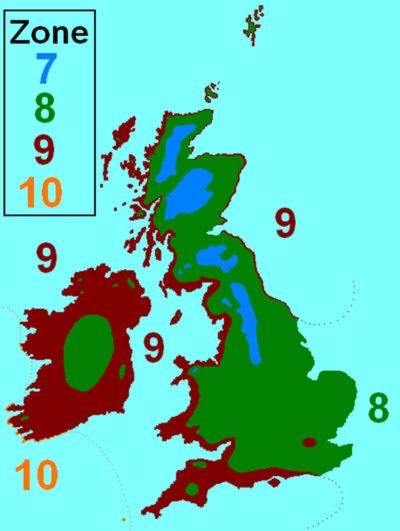
Here, you’ll see the weather climate zones, from 7 to 9 (with a few 10s on the coast of the Republic of Ireland). Our climate is defined by cool (but not fierce) winters and warm (but bearable) summers, with a frost-free season between early spring and late autumn.
Essentially, the lower the zone number, the lower the average temperature. These zones are used to identify how well any plant will withstand the colder temperatures during the winter.
So, take note of your zone as you read on. (If this all sounds a bit over-complicated, don’t worry: MOOWY offer seed mixes that proliferate throughout the UK, regardless of the zone. More about that later).
OK, all the geeky weather stuff out of the way; onto your existing lawn!
What type of grass do I have in my garden?
Most of us inherit a lawn. That’s not to say it gets left in someone’s will, of course – we just mean that you inherit a lawn when you move into a property. So, most of us don’t have a great deal of control over the TYPE of grass we currently have.
But this article is all about finding the correct type of grass for your garden, so if you’re dissatisfied with the quality of your grass, there’s a high chance that’s it’s not thriving because it doesn’t suit the conditions.
A rule of thumb for the best quality lawn: seed mixes are best because they have the most significant level of resistance and robustness.
Perennial Ryegrass
Most lawns in the UK are mainly perennial ryegrass, a hard-wearing species that can tolerate warm sun and minor drought conditions. It germinates quickly and handles the frosty snap of British winters.
However:
Ryegrass alone might become clumpy and patchy if you don’t look after it. And – after a while – these lawns begin to thin out and develop bald spots.
The principal features of perennial ryegrass are:
- Perfect for cool-season regions – that’s mild winters (as in the UK) and warmish Summers.
- Fast germination (so good for overseeding)
- Withstands minor shady spots
- Minimal maintenance (other than fertilising)
- Tolerant to heavy use
Perennial ryegrass has poor disease resistance and is a slow spreader. Once damaged, it’s reluctant to bounce back, so a seed mix (like one of MOOWY’s mixes) will help to boost your lawn’s resistance.
What does it look like?
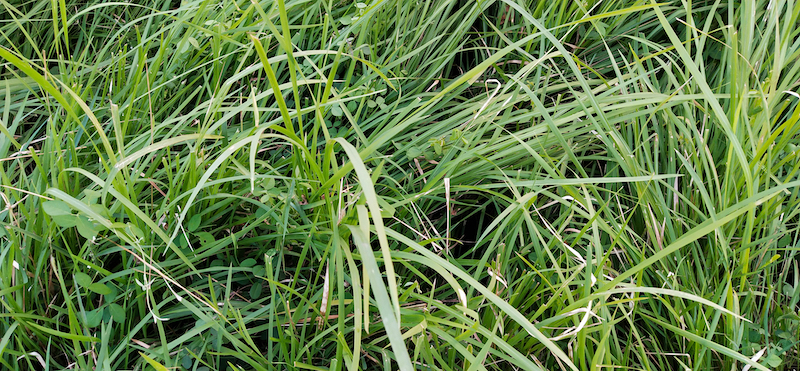
Perennial ryegrass thrives in USDA zones 2 to 8 and has medium- to dark leaves, with a fine-leafed texture. It grows densely and tends to maintain its good looks after heavy use.
To maintain the health of perennial ryegrass, it’s important to fertilise your soil regularly.
Red Fescue
Red fescue thrives in USDA zones 8-10, so it works well in warmer parts of the UK. With a deep root system, red fescue is particularly resistant to heavy use and drought conditions (once established).
Red fescue struggles with intense heat, but – unfortunately – we don’t get a lot of that in the UK. It goes brown and dormant in high temperatures or heavy humidity, but it will rebound once the conditions are more suitable.
Red fescue grows quickly and spreads well, and is remarkably tolerant of sandy soil.
The principal features of red fescue are:
- Very deep roots, making it resistant to drought
- Particularly pest-resistant
- Copes well in moderate heat – perfect for warmer parts of the UK, particularly zones 8 onward
What does red fescue look like?
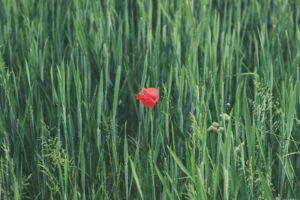
Red fescue is characterised by its very fine blades and a deep, attractive emerald green colour. This species spreads quickly via rhizomes (underground stems) which helps the grass recover from damage.
Red fescue can be cut shorter than perennial ryegrass, so it is particularly recommended for ornamental lawns but is commonly found on golf courses and recreation fields.
Kentucky Bluegrass
Much like red fescue is not red, Kentucky Bluegrass is not blue. And despite its name, Kentucky Bluegrass is native to Europe and North Africa.
So, that’s confusing, isn’t it?
Kentucky Bluegrass (KBG) has what is described as a broad, “boat-shaped” leaf and has a rich, deep, dark green colour. It’s tolerant of heavy use and goes dormant during periods of drought. It turns dry and brown in the summer unless you water it.
This is your cooler climate grass type and does well in USDA zone 7, so it grows most vigorously during the spring and autumn. Because it favours moderate heat and can withstand British winters, KBG is particularly recommended for northerly UK climes.
Kentucky Bluegrass needs quite a high level of maintenance to keeps its healthy look.
What does it look like?
The leaf is described as “boat-shaped” – however, think canoe rather than cross-channel ferry. It just means that the species is broad-leafed.
Kentucky Bluegrass is winter-hardy, but it’s not a fan of drought, so it will require watering during the summer to maintain its beautiful dark green colour.
So, what type of grass should I choose?
The Weather
Think about your weather first. Perhaps what characterises the British climate more than anything is its unpredictability.
But:
We could consider some cliches as rules of thumb:
- The warmest part of the country is the South Coast.
- The wettest part of the country is NOT Manchester, contrary to popular belief. Swansea and Plymouth are the wettest cities in the UK; Manchester is the 17th!
- Coastal towns are windier than inland towns and cities.
Check your weather conditions here.
Your soil type
Soil types are different all around the country. In fact, soil conditions can change from street to street.
When you consider your soil, think about its density. Heavy clay holds onto water and doesn’t drain quickly. Sandy soils dry out very easily (regardless of the amount of local rain you experience).
Choose a grass type that tolerates drought well if you have sandy soil. If you have a heavy clay soil, think about giving it a hand with drainage. Find out how here.
Consider a grass seed mix
Ultimately, like a pedigree dog, mixing species offers greater resistance to disease (and drought). But never allow a dog to experience drought!
Seed mixes offer the best of all worlds, but getting the mix right for yourself can be tricky.
Luckily, you don’t really need to worry because you can get premium seed mixes from MOOWY. We’ve expertly blended grass species that accommodate the entire UK climate.
Power Lawn
MOOWY’s Power Lawn mix has a high percentage of perennial ryegrass (80%), mixed with red fescue to improve resistance. This seed mix is suitable for all UK climate zones and produces a Premier-League quality turf.
As the name suggests, Power Lawn grass seed proliferates and keeps going regardless of the pounding you might give it throughout the year. The 20% mix of red fescue provides hardiness to heavy use.
Premium Lawn
Our Premium Lawn grass seed is a high percentage mix of red fescue (75%), which tolerates shorter mowing. So, if it’s that classic, manicured look you’re hoping for, Premium Lawn is your mix of choice. The other 25% is a mix of perennial ryegrass and Kentucky Bluegrass, making this mix hardy and perfect for all UK climates and soil types.
Remember, red fescue does best in moderate heat, so if you’re in the hottest parts of the UK, it might get scorched. However, the mix with perennial ryegrass and KBG gives it more resistance, and it should cope in even the warmest regions.
Quick Repair
As the name suggests, MOOWY’s Quick Repair grass seed is especially recommended for overseeding and replenishing the bald spots that appear in high-percentage perennial ryegrass.
With an 80% mix of perennial ryegrass, Quick Repair germinates and establishes quickly. But it’s the 20% mix of red fescue that offers greater structure, density, and resistance to drought and disease.
Designed for overseeding, this seed mix does well in all UK climate zones. It’s also recommended for starting new lawns from scratch.
Shade & Sun
One of the big problems with many British gardens is the lack of sun we experience – or (perhaps, more precisely) the inconsistency of sunlight.
Even if your lawn is south-facing and open, sunshine often struggles to penetrate rain clouds, even during the summer.
So, Shade & Sun grass seed has been developed to thrive in both full sun and shaded areas.
The high percentage of red fescue gives this seed mix its shade tolerance, while the perennial ryegrass (40%) offers speedy growth and Kentucky Bluegrass (10%) provides structure and strength.
Again, this seed mix is perfect for all UK zones but does particularly well in cooler, northern climes.
Sport & Fun
Our Sport & Fun grass seed is a mix of perennial ryegrass (60%), red fescue (35%), and Kentucky Bluegrass (5%).
This is our most robust seed mix, offering the best all-round results regardless of soil type, climate, and region.
If your lawn experiences high levels of use, then consider Sport & Fun the perfectly balanced mix of grasses to maintain beauty, colour, and texture, regardless of the service it provides.
All Grasses Require Feeding
If you want a beautiful lawn, it doesn’t matter what type of seed you choose unless you commit to a regular feeding routine.
Check out our Ultimate Guide to sowing grass seed for the best results.
Keep a lookout for our expert’s guide to fertilising your lawn. Coming soon!
Get in touch
Hopefully, you feel better informed about your grass type, but if you have more questions, we’d be very happy to help.
If you have any questions, email us at hello@moowy.shop. We’re looking forward to hearing from you.
Thanks for reading.
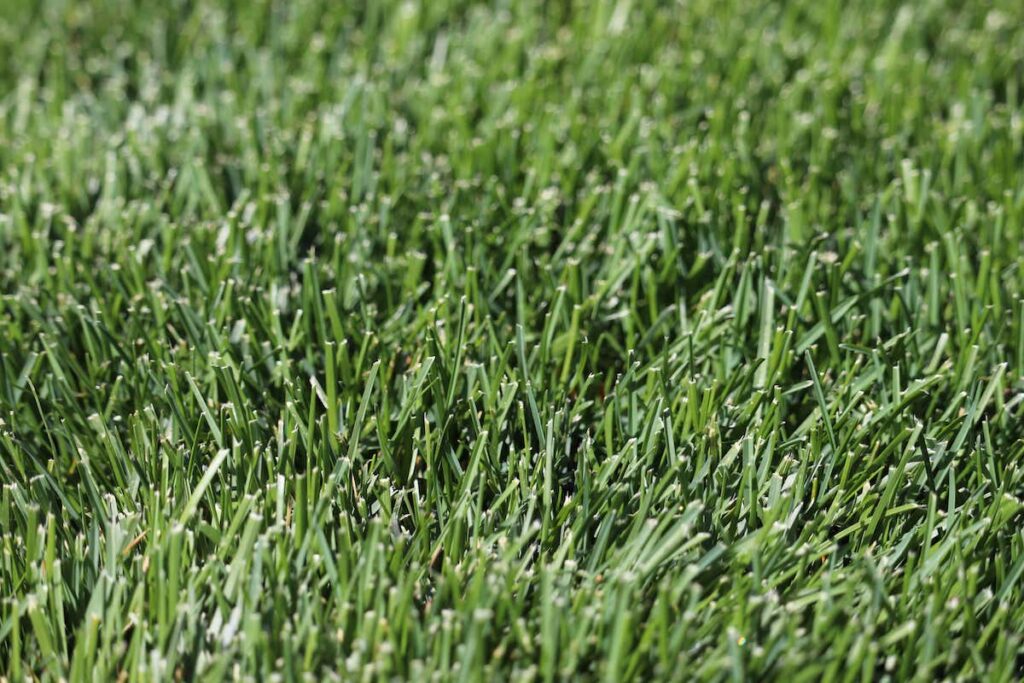
Leave a comment
Your answer will be displayed on the site and the interested party will be notified by email.
Leave a comment
Have a question or want to share your experience? Leave us a comment.
Read more
The best tips and tricks for a lush green lawn
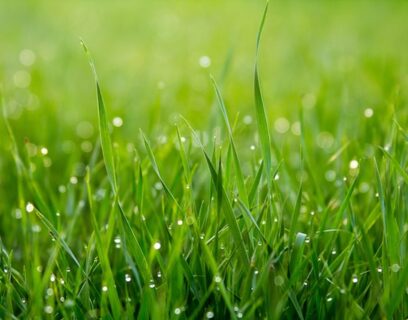 7 MIN
02 Jun
The Great Grass Seed Comparison!
7 MIN
02 Jun
The Great Grass Seed Comparison!
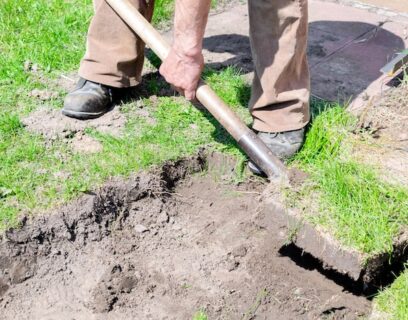 6 MIN
05 Mar
Removing Old Turf: why, when, and how?
6 MIN
05 Mar
Removing Old Turf: why, when, and how?
 Scarifying Kit
All products after scarifying | Quickly restores the lawn after scarifying | Outsmart weeds quickly with the use of this kit
From: € 39.99
Scarifying Kit
All products after scarifying | Quickly restores the lawn after scarifying | Outsmart weeds quickly with the use of this kit
From: € 39.99
 Spring Lawn Care Kit
MOOWY’s choice for the spring | Quick recovery of your lawn after winter | A strong lawn prevents weeds
From: € 25.99
Spring Lawn Care Kit
MOOWY’s choice for the spring | Quick recovery of your lawn after winter | A strong lawn prevents weeds
From: € 25.99
 Long Lasting Lawn Fertiliser
Effective for 90 days | See results in 14 days! | Suitable for all types of grass and soil
From: € 13.99
Long Lasting Lawn Fertiliser
Effective for 90 days | See results in 14 days! | Suitable for all types of grass and soil
From: € 13.99
Do you want a lawn calendar?
🌱 All important maintenance moments for your lawn during the year. Leave your email and we will send you the lawn calendar for free.
Enter your email
Receive the lawn calendar in the mail
Enjoy a green lawn all year round!




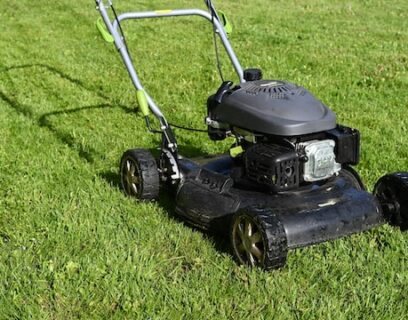






Comments (0)
There are no comments yet. Well then, what are you waiting for to
Be the first to write your comment!inaugurate this pretty page?
Do you have some comments?